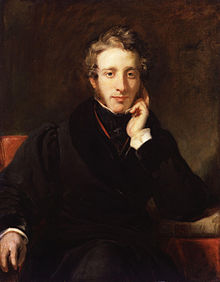Bulwer-Lytton Fiction Contest
The Bulwer-Lytton Fiction Contest (BLFC) is an annual competition to find the most fitting proposal for what the first sentence of the most terrifying novel imaginable could be. The competition is hosted by San José State University .
history
The competition took place for the first time in 1982. Conceived has him Professor Scott Rice with dedication to Edward George Bulwer-Lytton , whose novel Paul Clifford with by Snoopy known words It was a dark and stormy night ( It was a dark and stormy night ) begins. While there were only three entries in the first year, the second competition attracted national media interest and 10,000 contributions.
The award is endowed with US $ 250. BLFC articles have been published regularly since 1984 in book form, edited by Scott Rice.
Since Adam Cadre was of the opinion that shorter sentences were funnier, he launched the Lyttle Lytton Contest in 2000, which stipulates a maximum of 30 words (previously 25) per participant - even with multiple suggestions - per year. Cadre aims at "intentionally unintentionally funny lyrics".
regulate
Proposals can be submitted by post or email all year round, even several per person. The closing date for entries for each year is April 15th. In contrast to the competition The Most Beautiful First Movement , the movement should not be taken from a really published work. The judges divide the sentences into categories, such as crime fiction and science fiction, with one winner per category and one overall winner.
literature
Edited by Scott Rice and published by Penguin Books:
- It Was a Dark and Stormy Night. The Best (?) From the Bulwer-Lytton Fiction Contest. (1984)
- Son of "It Was a Dark and Stormy Night" (1986)
- Bride of Dark and Stormy (1988)
- It Was a Dark & Stormy Night: The Final Conflict (1992)
- Dark and Stormy Rides Again (1996)
Web links
- Official website (English)
- List of winners with submitted sets. (English)
- Lyttle Lytton Contest (English)
Individual evidence
- ^ Clyde Haberman: City of Whitman and Mailer Inspires a Line of Pure Piffle . In: The New York Times , September 2, 2008.
- ↑ Monica Hesse: Purple Prose? His Is Truly Bruising . In: The Washington Post , August 15, 2008, p. C01.
